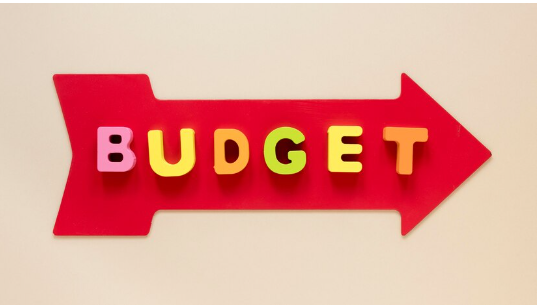How to Create a Family Budget That Everyone Can Stick To
Creating a Family Budget
Creating a family budget that everyone can stick to might seem daunting, but it doesn’t have to be. A well-planned budget can bring financial peace to your household, help you meet your goals, and reduce stress. Whether you’re trying to save for a family vacation, pay off debt, or simply manage your monthly expenses, a solid family budget is key.
Ready to take control of your family’s finances? Keep reading to learn how to create a budget that works for everyone.
Why Family Budgeting Matters

Budgeting as a family is crucial because it ensures everyone is on the same page financially. When each family member understands the budget, it’s easier to make spending decisions that align with your financial goals. A family budget can help you:
- Avoid unnecessary debt
- Build savings for emergencies
- Plan for future expenses, like college or retirement
- Enjoy more financial freedom
The key to a successful budget is making sure it’s something everyone in the household can stick to. Let’s explore how to do that.
1. Understand Your Family’s Financial Picture
Before you can create a budget, you need to know exactly where your money is going. Start by gathering all your financial information—income, expenses, debt, and savings. You can do this manually or use a budgeting app to help track your finances.
Here’s what you should include:
- Income: List all sources of income, including salaries, freelance work, rental income, etc.
- Fixed Expenses: Include rent/mortgage, utilities, insurance, and other bills that stay the same each month.
- Variable Expenses: These are costs that change monthly, like groceries, entertainment, and gas.
- Debt: List any outstanding debts, such as credit cards, loans, or medical bills.
- Savings and Investments: Include emergency funds, retirement accounts, and any other savings.
Tip: Track your spending for a month to see where your money actually goes. This will give you a clearer picture of your financial situation.
2. Set Clear Family Goals
Every successful budget starts with clear goals. What does your family want to achieve financially? Maybe you want to save for a down payment on a house, pay off debt, or take a dream vacation. Whatever your goals, make sure they’re specific, measurable, achievable, relevant, and time-bound (SMART).
Examples of SMART Goals:
- Save $10,000 for a down payment on a house in 2 years.
- Pay off $5,000 in credit card debt in 12 months.
- Save $3,000 for a family vacation next summer.
Remember, these goals should be agreed upon by everyone in the family. When everyone’s on board, it’s easier to stay motivated and stick to the budget.
3. Choose a Budgeting Method That Works for Your Family

There are several budgeting methods to choose from. The key is finding one that works for your family’s unique situation. Here are three popular methods:
- The 50/30/20 Rule: Allocate 50% of your income to needs, 30% to wants, and 20% to savings and debt repayment. This method is simple and easy to follow.
- Zero-Based Budgeting: Assign every dollar a job. This method requires you to plan where every dollar goes, so your income minus expenses equals zero. It’s great for families who want detailed control over their finances.
- Envelope System: Use cash envelopes for different spending categories (e.g., groceries, entertainment). When the envelope is empty, you stop spending in that category. This method helps control overspending.
Tip: You can combine methods to fit your family’s needs. For example, use the 50/30/20 rule as a guideline but adopt the envelope system for discretionary spending.
4. Involve the Whole Family
A budget that only one person in the household knows about is likely to fail. Everyone should be involved in the budgeting process, from setting goals to tracking spending. This way, each family member understands their role in the budget and is more likely to stick to it.
Here’s how to involve everyone:
- Family Meetings: Schedule regular family meetings to discuss the budget, review progress, and make adjustments as needed.
- Assign Roles: Give each family member a responsibility, such as tracking grocery expenses or managing savings. This creates a sense of ownership.
- Be Transparent: Share the family’s financial goals and progress. When everyone sees how their efforts contribute to the big picture, they’ll be more motivated to stick to the budget.
5. Plan for Fun and Flexibility
Budgeting doesn’t mean you have to cut out all the fun. In fact, it’s important to allocate some money for entertainment and leisure activities. This helps prevent budget burnout and makes it easier to stick to the plan.
Here’s how to make room for fun:
- Set Aside “Fun Money”: Allocate a small portion of your budget for activities like dining out, movies, or family outings. This allows you to enjoy life while staying on track financially.
- Create a Buffer: Include a buffer in your budget for unexpected expenses or last-minute splurges. This gives you flexibility without derailing your financial goals.
Remember, a budget is a tool to help you manage your money, not a set of rigid rules. Adjust it as needed to fit your family’s lifestyle.
6. Monitor and Adjust Your Budget Regularly
Once your budget is in place, the work isn’t over. Regularly review and adjust your budget to ensure it’s still working for your family. Life changes, and so should your budget.
How to keep your budget on track:
- Monthly Reviews: At the end of each month, compare your actual spending to your budgeted amounts. If you’re consistently overspending in a category, make adjustments.
- Quarterly Check-Ins: Every three months, review your financial goals and progress. Are you on track? Do your goals need to be adjusted?
- Yearly Overhaul: Once a year, do a deep dive into your finances. Assess what worked, what didn’t, and how you can improve for the next year.
7. Use Technology to Simplify Budgeting
There are many tools available to help you create and stick to your family budget. Budgeting apps can make tracking expenses, setting goals, and adjusting your budget easier.
Some popular budgeting apps include:
- Mint: Automatically tracks your spending and categorizes expenses, making it easy to see where your money goes.
- You Need a Budget (YNAB): Focuses on zero-based budgeting and encourages you to give every dollar a job.
- Goodbudget: An app that helps you manage your money using the envelope system.
Using technology can take the hassle out of budgeting and help keep your family on track.
Conclusion
Creating a family budget that everyone can stick to is possible with the right approach. By understanding your finances, setting clear goals, choosing a budgeting method that works, involving the whole family, planning for fun, and regularly reviewing your progress, you can achieve financial peace of mind.
Ready to get started? Take the first step today by sitting down with your family and discussing your financial goals. Remember, the journey to financial freedom starts with a single step—creating a budget that works for your family.
Start budgeting today! Download a budgeting app or create a simple spreadsheet to get your family on the path to financial success. Don’t wait—your financial future is in your hands.






